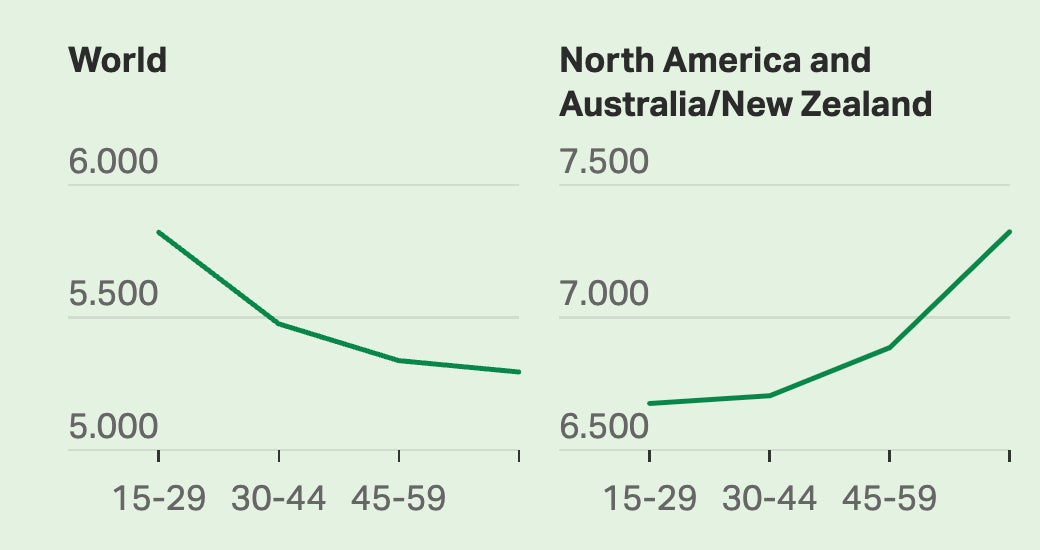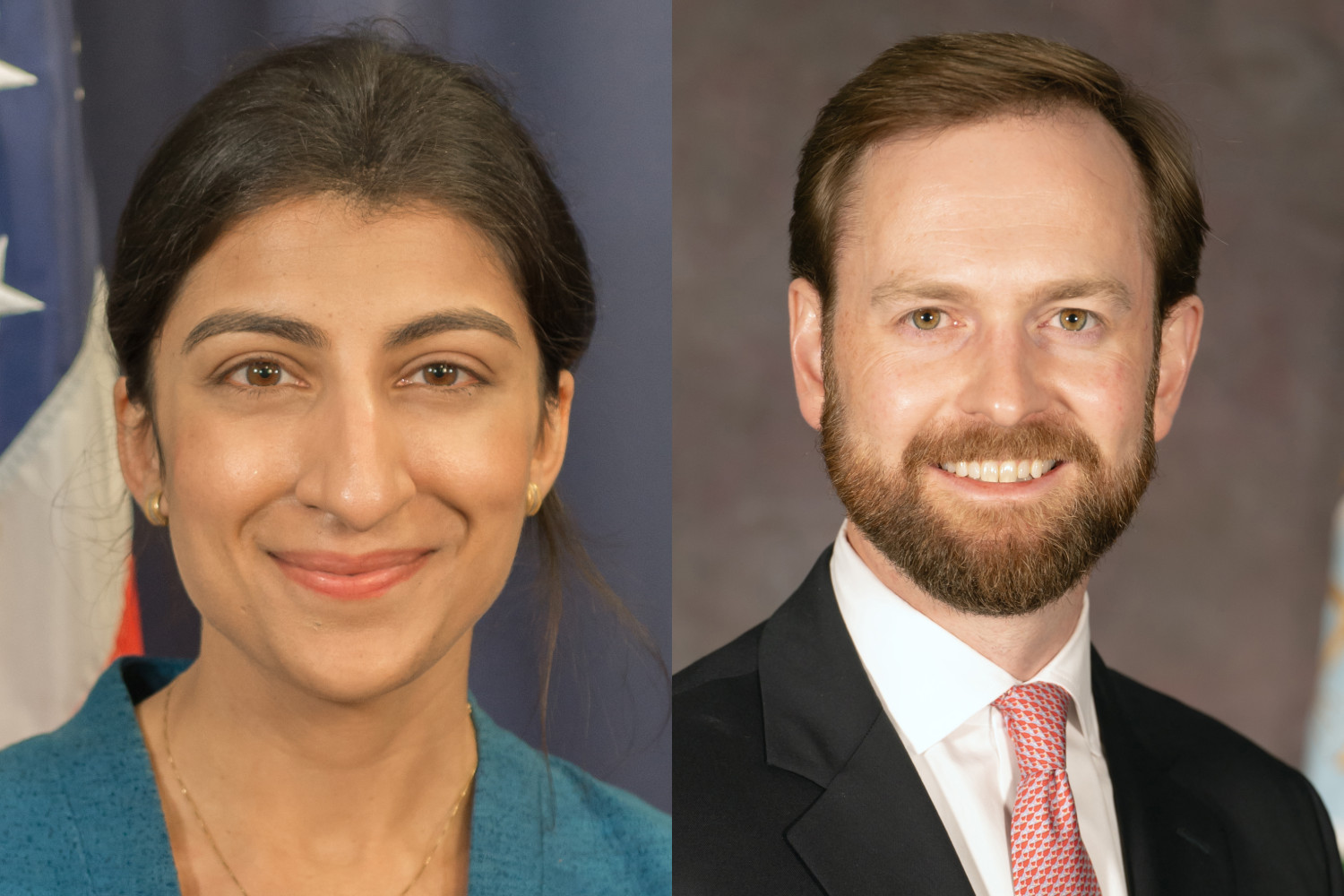The U.S. ranks as the 23rd happiest country in the world, according to a new report from the United Nations published on Wednesday. And while that may not sound too bad, given the fact that there are 143 countries on the list, it’s a significant drop from last year when the U.S. ranked 15th. Sadly, it looks like Americans under the age of 44 are to blame for our national malaise.
The study—published each year by the UN, Oxford, and Gallup—tracks global happiness on a three-year average through the Gallup World Poll, which asks people around the world to evaluate their life overall. The best possible life is ranked as a 10 and the worst possible is a 0.
The top 10 happiest countries, with each country’s self-evaluation average:
Finland (7.741)
Denmark (7.583)
Iceland (7.525)
Sweden (7.344)
Israel (7.341)
Netherlands (7.319)
Norway (7.302)
Luxembourg (7.122)
Switzerland (7.060)
Australia (7.057)
The average score among Americans was 6.725, making it the first time the U.S. has slipped out of the top 20 since the World Happiness Report was started in 2012. Unfortunately, it appears the unhappiness of Gen Z and Millennials is the reason we’re sliding so rapidly.
The U.S. is in some ways a global anomaly, with most other countries showing younger people tend to be happier than older people. But the U.S. wasn’t entirely alone in this regard. Other English-speaking countries like Australia, New Zealand, and Canada all have an unusually large happiness gap among generations, with younger people much more unhappy than older people for some reason.

When you drill down to examine the rankings by generation—age details provided for the first time in this year’s report—the findings in the U.S. become quite stark. Americans aged 10-29 were ranked 62nd among all countries on the happiness scale, far behind their young counterparts in places like Lithuania (1st), Israel (2nd), and Serbia (3rd).
Americans aged 30-44 were ranked 42nd for their age group globally, well below people of the same age in other countries like Finland (1st), Israel (2nd), and Serbia (3rd). Americans between the ages 45-59 ranked higher (17th) than younger Americans, but still below the same age group in countries like Finland (1st), Iceland (2nd), and Sweden (3rd).
Americans 60 and over were the happiest age group in the country, ranking 10th on the global index, though that age group was still happiest in countries like Denmark (1st), Finland (2nd), and Norway (3rd). The 60+ group includes the Baby Boomers, of course, but also generations like the Silent Generation (think 81-year-old Joe Biden) and the Greatest Generation (anyone in their late 90s and above).
What’s causing this huge disparity in happiness among American generations? The report specifically noted that loneliness was much more common in younger people, but cautioned it was only “part of the story.”
“Loneliness is almost twice as high among the Millennials than among those born before 1965. Millennials also feel less socially supported than Boomers in those countries, another place in which these countries look different from the rest of the world,” the report explains.
Oddly, the report notes that all of this is occurring “despite the fact that actual social connections are much more frequent for Millennials than Boomers.” In fact, Boomers and older generations have less frequent in-person interactions with practically all groups except their neighbors, according to the new study.
The report also zeroes in on six key variables for people feeling more happy in a given society: GDP per capita, healthy life expectancy, having someone to count on, freedom to make life choices, generosity, and freedom from corruption. However, it didn’t break out how each may have contributed to happiness in the U.S. during recent years.
Could all of this generational antagonism have anything to do with the fact that Millennials are 22% of the population yet hold just 8.5% of America’s wealth, while older generations like the Boomers have 50%, Gen X has 29.5%, and the Silent Generation has 11.9%, according to the latest available data? Again, the report doesn’t get into specifics like that. But if were to look into the problem, we might start there.
Given the steady drumbeat of news coverage about the New Cold War, you may also be wondering where America’s geopolitical adversaries rank in the new study. China ranks 60th while Russia ranks 72nd, but there were big differences in who was the happiest in the two countries. The generation of people over 60 were the happiest in China while people under 30 were the happiest in Russia.
The three least happy countries in the report were the small south African nation of Lesotho, with a rating of just 3.186, Lebanon (2.707), and Afghanistan (1.721). And it didn’t matter what age group you may belong to, Afghanistan was ranked last among both the old and the young. It’s easy to speculate that Afghanistan’s unhappiness might have something to do with the Taliban taking control of the country again after America’s exit in the summer of 2021, but Afghanistan was also very unhappy with U.S. boots on the ground. For example, Afghanistan was ranked third from the bottom in 2019.
While Palestine was ranked 103rd in the world with a score of 4.879, the report notes that the life evaluation surveys were conducted before the terror attacks by Hamas on October 7, 2023, and the subsequent war in Gaza. Even if the polling in the Palestinian territories were conducted more recently and showed a huge drop in happiness, as it almost certainly would be given the devastation of the war, the effect on the ranking would still be muted by the fact that it’s an average over three years. Needless to say, it’s hard to be happy when you’re starving to death.














